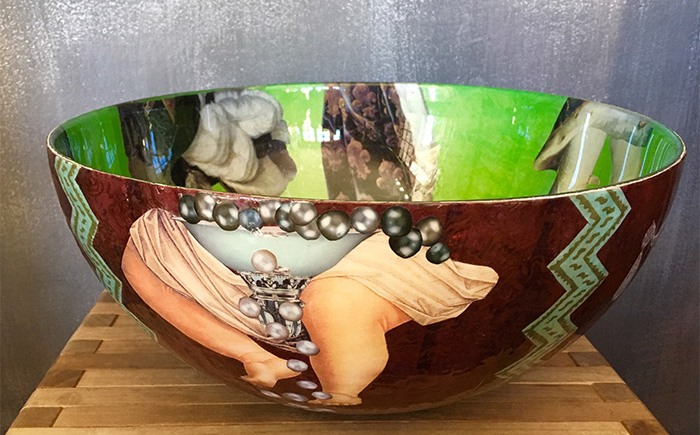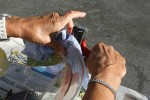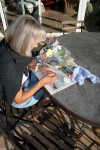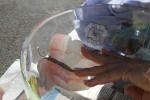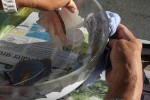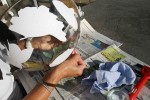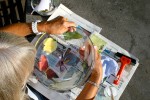Decoupage as we know it today had its apogee in the 18th century and seems to have started in Venice, spreading from there to France. In Britain it was used as an entertainment by high society ladies and even practiced by Queen Victoria. In France, Marie Antoinette and her lady friends cut up anything they could get their hands on – including priceless original paintings, in order to create fans, boxes, table tops, and anything else that took their fancy.
By now, decoupage is a well established form of art. Famous decoupeur Hiram Manning defines it as, “paper that has been coloured, cut, assembled and glued according to one’s own design. Your bits of cut paper are what bricks are to an architect or pigments to a painter: they’re your means to an end: your own design. Not anyone else’s; decoupage is not copying. Use your cuttings to create, and you’ll have a true decoupage.”
Decoupage is something that I have delved into for fun many times. In the early 1990s I decorated an old chest for my son and when I did up an old farmhouse in France I plastered the walls of a bathroom with various cuttings to create something both fun and unique.
I have worked on a wide variety of surfaces including chairs, mirrors, hat boxes, and even a giraffe sculpture. But first and foremost I am attracted by the three dimensional world of decoupage on glass, in various shapes of bowls, vases, and dishes.
The greatest challenge of working with decoupage is bringing the lustre, or shine, out of the art works. This is also by far the most time consuming part of the work. Each item requires at least 30 applications of varnish. Before the last five layers are added, the item is sanded down to ensure a smooth sheen.
Every piece I create tells a story – and it even has its own soul!
Find out more about my decoupage on glass
Find out more about my decoupage on objects
Below you can see the work process as I am working outside:
